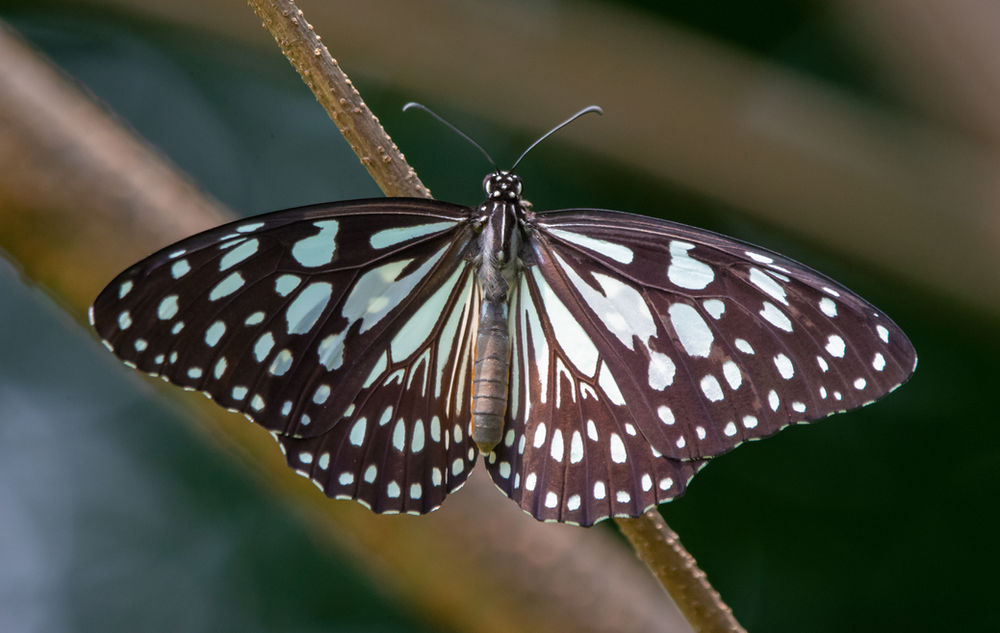top of page
Butterfly populations are a very good indicator of the health of an area's ecosystem !!
Image contributed by U.K. photographer Pamela Jean Vinton
Tirumala limniace is a small butterfly with wide wings. It has a wingspan of 90 to 100 mm, with the males being smaller than the females. The dorsal side of the wing is dark brown to black and patterned with bluish white, semi transparent spots and lines. The blue of the bluish white spots consists of the pigment pterobilin.
In general, all butterflies can directly absorb heat from the sun via their wings to facilitate autonomous flight. (Studies on Blue Tiger butterflies show that high intensity light significantly increases their flight activity.)
Blue tigers have a wing surface color that is composed of both light and dark colors. The dark areas on the wing surfaces are the heat absorption areas that allow for the facilitation of autonomous flight.
Their antennae are black, as are the head and thorax, which have white dots and lines.
The top of the abdomen is dark, the underside is pale brownish yellow colored with white shimmering underneath at the segment boundaries.
They migrate extensively during the monsoons in southern India. The migratory populations have been observed to consist nearly entirely of males. They are also known to mud puddle during migration.
In the dry season large numbers are often seen along with other Milkweed butterflies, roosting together in sheltered cool forests and plantations
They are seen both in hills and in the plains. Habitat is tropical forest, although they have been observed in forests and gardens and the Pink Cockscomb (Ageratum conyzoides) is their favorite flower.
Tirumala limniace is typically seen flying in sunny conditions with a fairly fast and relaxed flight.
They are commonly seen at low (150 - 550 m) elevations.
Males take poison from the plants Heliotropium Indicum and Crotalaria Retusa, which makes them less attractive to predators.
Blue Tigers have an estimated lifespan of approx. 14 days.

Diet: caterpillars feed on the leaves of Dragia Volubilis.
Diet: adults take nectar from a variety of plants.
Avg. wingspan: is 7 - 8.5 cm / 2.75 - 3.34 " for males and females.
Family: Nymphalidae

*As members of the Brush Footed (Nymphalidae) family, they use their pair of shorter front legs for food tasting, and their 2 pair of longer rear legs for propulsion.
The single biggest threat to butterfly survival is habitat destruction!!
bottom of page



